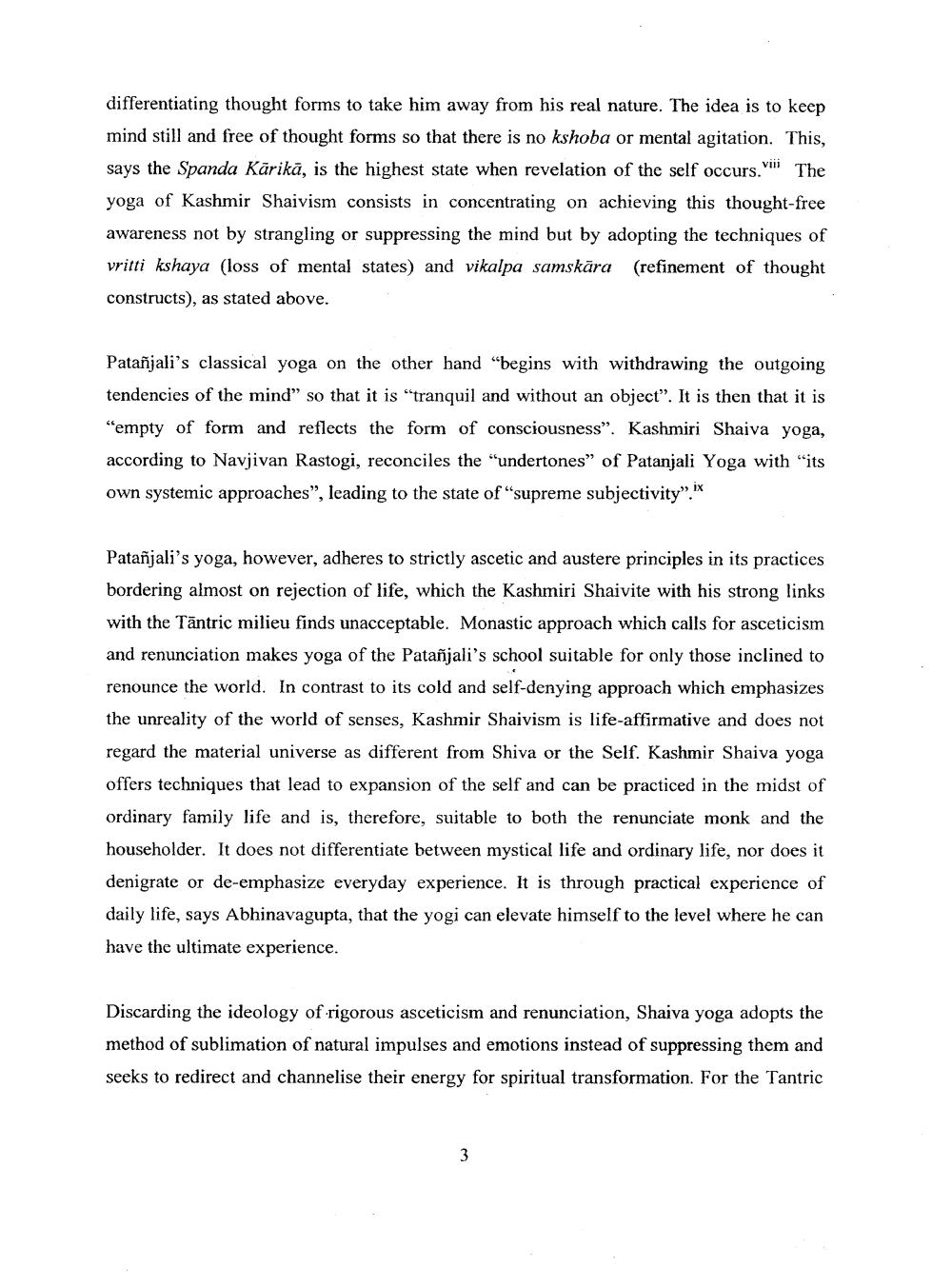Book Title: Yoga of Synthesis in Kashmir Shaivam Author(s): S S Toshkhani Publisher: S S Toshkhani View full book textPage 3
________________ differentiating thought forms to take him away from his real nature. The idea is to keep mind still and free of thought forms so that there is no kshoba or mental agitation. This, says the Spanda Kārikā, is the highest state when revelation of the self occurs. The yoga of Kashmir Shaivism consists in concentrating on achieving this thought-free awareness not by strangling or suppressing the mind but by adopting the techniques of vritti kshaya (loss of mental states) and vikalpa samskāra (refinement of thought constructs), as stated above. Patañjali's classical yoga on the other hand “begins with withdrawing the outgoing tendencies of the mind” so that it is "tranquil and without an object". It is then that it is "empty of form and reflects the form of consciousness”. Kashmiri Shaiva yoga, according to Navjivan Rastogi, reconciles the “undertones” of Patanjali Yoga with its own systemic approaches", leading to the state of "supreme subjectivity". IX Patañjali's yoga, however, adheres to strictly ascetic and austere principles in its practices bordering almost on rejection of life, which the Kashmiri Shaivite with his strong links with the Tāntric milieu finds unacceptable. Monastic approach which calls for asceticism and renunciation makes yoga of the Patañjali's school suitable for only those inclined to renounce the world. In contrast to its cold and self-denying approach which emphasizes the unreality of the world of senses, Kashmir Shaivism is life-affirmative and does not regard the material universe as different from Shiva or the Self. Kashmir Shaiva yoga offers techniques that lead to expansion of the self and can be practiced in the midst of ordinary family life and is, therefore, suitable to both the renunciate monk and the householder. It does not differentiate between mystical life and ordinary life, nor does it denigrate or de-emphasize everyday experience. It is through practical experience of daily life, says Abhinavagupta, that the yogi can elevate himself to the level where he can have the ultimate experience. Discarding the ideology of rigorous asceticism and renunciation, Shaiva yoga adopts the method of sublimation of natural impulses and emotions instead of suppressing them and seeks to redirect and channelise their energy for spiritual transformation. For the TantricPage Navigation
1 2 3 4 5 6 7 8 9 10 11 12 13 14 15 16 17 18 19 20 21 22 23 24 25 26 27 28 29 30 31 32 ... 46
